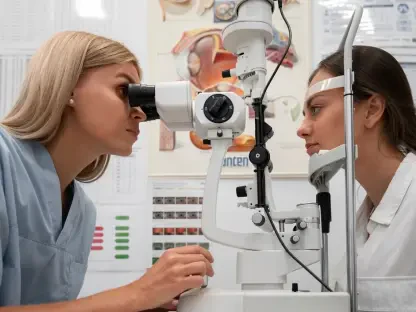In an era where life expectancy continues to climb, a staggering statistic reveals a hidden crisis in healthcare: nearly 60% of health professionals hold age-based assumptions that compromise care for older adults, according to a World Health Organization report. This pervasive issue of ageism, defined as discrimination based on age, casts a shadow over the industry, particularly as the global population of individuals over 65 is projected to double by 2050. Nurses, as frontline caregivers, play a pivotal role in addressing the complex needs of this demographic, yet many enter the field with training that inadvertently reinforces outdated stereotypes. This report examines the urgent need to reform nurse education to tackle ageism, ensuring equitable and compassionate care in a rapidly aging society.
Understanding the Aging Population and Healthcare Demands
The demographic landscape of healthcare is undergoing a profound shift as advancements in medicine and public health extend life expectancy. With more individuals living into their 80s and beyond, the proportion of older adults in populations worldwide continues to grow, placing unprecedented demands on healthcare systems. This trend highlights a critical need for professionals who can navigate the intricacies of aging, from preventive care to managing long-term conditions.
Older adults often present with multiple chronic illnesses and disabilities, creating unique challenges for caregivers. Conditions such as heart disease, diabetes, and arthritis, compounded by age-related declines in mobility or cognition, require tailored approaches that go beyond standard medical interventions. The complexity of these needs underscores the importance of a workforce trained to handle not just physical ailments but also the social and emotional dimensions of aging.
Nurses, as the backbone of patient care, are central to meeting these growing demands. Their role extends from clinical expertise to advocacy, ensuring that older patients receive dignified and effective treatment. However, without adequate preparation to address the diverse realities of aging, the healthcare system risks failing this vulnerable group, making the evolution of nurse training an industry imperative.
The Pervasiveness of Ageism in Healthcare Settings
Defining Ageism and Its Manifestations
Ageism, the stereotyping or discrimination against individuals based on their age, remains a significant barrier in healthcare settings. Global data from the World Health Organization indicates that a majority of health professionals harbor assumptions about older patients, often dismissing symptoms as inevitable consequences of aging. Such biases result in tangible harm, including under-treatment of serious conditions and delayed interventions that could improve quality of life.
The consequences of ageist attitudes are far-reaching, leading to missed diagnoses and restricted access to essential services. Older adults may be denied timely screenings or rehabilitative therapies simply because their age is perceived as a limiting factor. This systemic oversight not only undermines patient outcomes but also erodes trust in healthcare providers, amplifying the need for awareness and change at all levels of the industry.
Societal and Systemic Contributors to Ageist Attitudes
Societal stereotypes paint older adults as inherently frail or dependent, shaping perceptions within healthcare environments. These ingrained beliefs often influence how professionals interact with patients, prioritizing younger demographics while overlooking the potential for vitality and independence in later life. Media portrayals and cultural narratives further entrench these views, creating a feedback loop of bias that permeates clinical settings.
Systemic issues within aged care exacerbate these challenges, with understaffing and low wages contributing to depersonalized treatment. Care facilities frequently operate under strained resources, leaving nurses and aides with little time to build meaningful connections with residents. This environment fosters a transactional approach to care, where individual needs and personal histories are sidelined, reinforcing negative assumptions about aging.
Shortcomings in Current Nurse Training Programs
Current nurse education often falls short in preparing students to confront ageism, with curricula rooted in outdated frameworks. Many programs emphasize frailty and decline when depicting older adults, presenting case studies that focus narrowly on conditions like dementia or palliative care. This limited perspective fails to capture the full spectrum of aging, neglecting stories of resilience and active living that could reshape student mindsets.
Clinical placements further compound the issue, as early exposures are often confined to aged residential care facilities. These settings, while valuable for learning end-of-life care, reinforce the notion that older adults are universally dependent, ignoring the diversity of health needs among active seniors. Such narrow experiences limit students’ ability to envision holistic care strategies that promote independence and well-being.
Student reflections reveal additional concerns, including the emotional burden of witnessing inadequate care in under-resourced facilities. Many express frustration over the career stigma associated with aged care, fearing that specializing in this field could restrict future opportunities in other nursing domains. These insights highlight a critical gap in training, where societal biases and systemic challenges shape negative perceptions before professional skills are fully developed.
Ageism as an Emerging Social Determinant of Health
Ageism extends beyond individual interactions, emerging as a social determinant of health that threatens to deepen existing inequities. For marginalized groups such as Māori, Pacific people, and rainbow communities, ageist attitudes can intersect with other forms of discrimination, creating compounded barriers to care. This intersectionality demands a nuanced approach to healthcare delivery that acknowledges diverse aging experiences.
Addressing these disparities requires culturally sensitive training that equips nurses to navigate varied social and historical contexts. Without such preparation, the industry risks perpetuating cycles of exclusion, where certain populations face greater challenges in accessing quality care as they age. The ethical implications of this gap are profound, calling for immediate action to ensure fairness across all demographics.
The urgency of tackling ageism is both a moral and practical concern, as unaddressed biases undermine the fundamental goal of equitable healthcare. By recognizing ageism as a structural issue, stakeholders can prioritize interventions that not only improve patient outcomes but also strengthen the integrity of the system. This shift is essential to building trust and efficacy in an increasingly diverse society.
Pathways for Reform in Nurse Education
Reforming nurse education begins with revising curricula to reflect a balanced view of aging, incorporating narratives of vitality alongside challenges. Training materials should showcase older adults in varied contexts, from community-based wellness programs to chronic disease management, challenging the stereotype of uniform decline. This approach can foster a more comprehensive understanding among future nurses.
Diversifying clinical placements offers another avenue for change, exposing students to active seniors in settings beyond traditional care facilities. Rotations in community health centers or rehabilitation programs can highlight the potential for independence and recovery, broadening students’ perspectives on what aging entails. Such experiences are crucial for dismantling preconceived notions and building adaptable caregiving skills.
Fostering intergenerational empathy is equally vital, encouraging students to confront societal biases through reflective exercises and mentorship programs. Educational initiatives that pair nursing students with older volunteers can humanize the aging process, breaking down barriers of misunderstanding. These strategies, rooted in compassion and awareness, pave the way for a workforce better equipped to serve an aging population.
Building a Future-Ready Nursing Workforce
The pressing need for educational reform in nursing cannot be overstated, as the industry grapples with the realities of an aging society. Updated training programs hold the potential to transform care quality, ensuring that older adults receive respectful and effective treatment tailored to their unique needs. This evolution is not just a response to demographic trends but a commitment to reducing health disparities across the board.
Looking ahead, stakeholders, including educators and policymakers, must prioritize ageism as a core focus in healthcare training. Collaborative efforts to redesign curricula, expand placement opportunities, and integrate cultural competence can create a ripple effect, enhancing patient care while elevating the profession’s standards. These steps are integral to preparing nurses for the complexities of modern healthcare demands.
Reflecting on the insights gathered, it becomes clear that actionable solutions are imperative to address the entrenched issue of ageism. Revising educational frameworks to include diverse aging narratives emerges as a foundational step, alongside expanding clinical exposures to reflect varied health scenarios. Policymakers are urged to allocate resources toward supporting aged care facilities, improving working conditions to attract and retain talent. By investing in these reforms, the industry takes significant strides toward ensuring that future generations of nurses deliver care with empathy and equity, setting a precedent for systemic change in healthcare delivery.









